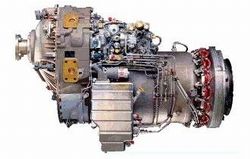Sun, May 30, 2010
Data Was Collected By A Research Aircraft That Flew 30 Hours
Through Ash Clouds
It's been a while since we've heard about widespread airspace
closures due to the eruption of the volcano in Iceland. But it's
certainly a question of when, rather than if, such an event
will happen in the future. And what has become evident is that much
more needs to be known about how volcanic ash affects turbine
aircraft engines. With that in mind, Honeywell said Thursday that
it will be analyzing the effects of ash ingestion in two of its
TPE331 turboprop engines which were used to gather scientific data
during the recent volcanic eruptions and flights into the
subsequent ash cloud over Europe.

TPE331 Engine
The engines powered a Dornier 228 and accumulated 10 hours of
operation in the volcanic ash cloud and an additional 22 hours of
operation in the outer zone of the cloud. The engines have been
returned to Phoenix, AZ for analytical teardown and
evaluation.
"The industry has little information on the effects of volcanic
ash ingestion in turbine engines and we hope the data we gain from
this effort will help define operational impact to the engine and
any damage to components," said Ronald J. Rich, Vice President,
Propulsion Systems, Honeywell Aerospace. "These volcanic eruptions
give us an opportunity to systematically analyze volcanic ash
impact to our engines and this examination could yield a basis for
future turbine engine performance and maintenance service
data."
The TPE331 powered aircraft operated by the Natural Environment
Research Council in the United Kingdom, was collecting particulate
data at one second intervals during their flights into the clouds.
The data includes composition of the debris along with navigational
and engine operational data.

Volcanic Ash Cloud Photo 4.17.10
Also known to have flown aircraft into and around the volcanic
plume is Germany's Deutsches Zentrum fur Luft- und Raumfahrt; DLR,
who operated a Falcon 20-5, powered by Honeywell's TFE-731-5BR
engines. The DLR is Germany's national research center for
aeronautics and space. DLR's extensive research and development
work in aeronautics, space, transportation and energy is integrated
into German and international cooperative ventures.
The British Met Office Information, a weather service
organization also flew its Honeywell ALF 502 powered BAE-146 around
the plume. The British Met office predicts weather for the United
Kingdom and is a significant contributor to the global
understanding of climate change and weather science.
More News
19-Year-Old Pilot Was Attempting to Fly Solo to All Seven Continents On his journey to become the first pilot to land solo on all seven continents, 19-year-old Ethan Guo has hit a >[...]
From 2017 (YouTube Edition): A Quality LSA For Well Under $100k… Aeroprakt unveiled its new LSA at the Deland Sport Aviation Showcase in November. Dennis Long, U.S. Importer>[...]
Hazardous Weather Information Summary of significant meteorological information (SIGMET/WS), convective significant meteorological information (convective SIGMET/WST), urgent pilot>[...]
Aero Linx: Historic Aircraft Association (HAA) The Historic Aircraft Association (HAA) was founded in 1979 with the aim of furthering the safe flying of historic aircraft in the UK>[...]
"We would like to remember Liam not just for the way he left this world, but for how he lived in it... Liam was fearless, not necessarily because he wasn't afraid but because he re>[...]
 TikToker Arrested After Landing His C182 in Antarctica
TikToker Arrested After Landing His C182 in Antarctica Classic Aero-TV: Versatile AND Practical - The All-Seeing Aeroprakt A-22 LSA
Classic Aero-TV: Versatile AND Practical - The All-Seeing Aeroprakt A-22 LSA ANN's Daily Aero-Term (06.27.25): Hazardous Weather Information
ANN's Daily Aero-Term (06.27.25): Hazardous Weather Information ANN's Daily Aero-Linx (06.27.25)
ANN's Daily Aero-Linx (06.27.25) Aero-News: Quote of the Day (06.27.25)
Aero-News: Quote of the Day (06.27.25)




